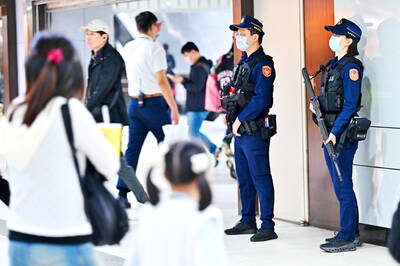China’s space agency said a core segment of its biggest rocket re-entered Earth’s atmosphere above the Maldives in the Indian Ocean and that most of it burned up early yesterday.
Harvard astrophysicist Jonathan McDowell, who tracked the tumbling rocket part, wrote on Twitter: “An ocean reentry was always statistically the most likely. It appears China won its gamble. But it was still reckless.”
People in Jordan, Oman and Saudi Arabia reported sightings of the Chinese rocket debris on social media, with scores of users posting footage of the debris piercing the early dawn skies over the Middle East.
Usually, discarded rocket stages re-enter the atmosphere soon after liftoff, normally over water, and do not go into orbit.
The official Xinhua news agency later reported that re-entry occurred at 10:24am Beijing time.
“The vast majority of items were burned beyond recognition during the re-entry process,” the report said.
Despite that, NASA Administrator US Senator Bill Nelson issued a statement saying: “It is clear that China is failing to meet responsible standards regarding their space debris.”
The roughly 30m-long rocket stage is among the biggest space debris to fall to Earth.
China’s space program, with its close military links, has not said why it put the main component of the rocket into space rather than allowing it to fall back to Earth soon after discharging its payload, as is usual in such operations.
The Long March 5B rocket carried the main module of China’s first permanent space station — Tianhe, or Heavenly Harmony — into orbit on April 29. China plans 10 more launches to carry additional parts of the space station into orbit.
An 18-tonne rocket that fell in May last year was the heaviest debris to fall uncontrolled since the former Soviet space station Salyut 7 in 1991.
China’s first-ever space station, Tiangong-1, crashed into the Pacific Ocean in 2016.

The US government has signed defense cooperation agreements with Japan and the Philippines to boost the deterrence capabilities of countries in the first island chain, a report by the National Security Bureau (NSB) showed. The main countries on the first island chain include the two nations and Taiwan. The bureau is to present the report at a meeting of the legislature’s Foreign Affairs and National Defense Committee tomorrow. The US military has deployed Typhon missile systems to Japan’s Yamaguchi Prefecture and Zambales province in the Philippines during their joint military exercises. It has also installed NMESIS anti-ship systems in Japan’s Okinawa

TRAGEDY STRIKES TAIPEI: The suspect died after falling off a building after he threw smoke grenades into Taipei Main Station and went on a killing spree in Zhongshan A 27-year-old suspect allegedly threw smoke grenades in Taipei Main Station and then proceeded to Zhongshan MRT Station in a random killing spree that resulted in the death of the suspect and two other civilians, and seven injured, including one in critical condition, as of press time last night. The suspect, identified as a man surnamed Chang Wen (張文), allegedly began the attack at Taipei Main Station, the Taipei Fire Department said, adding that it received a report at 5:24pm that smoke grenades had been thrown in the station. One man in his 50s was rushed to hospital after a cardiac arrest

PUBLIC SAFETY: The premier said that security would be tightened in transport hubs, while President Lai commended the public for their bravery The government is to deploy more police, including rapid response units, in crowded public areas to ensure a swift response to any threats, President William Lai (賴清德) said yesterday after a knife attack killed three people and injured 11 in Taipei the previous day. Lai made the remarks following a briefing by the National Police Agency on the progress of the investigation, saying that the attack underscored the importance of cooperation in public security between the central and local governments. The attack unfolded in the early evening on Friday around Taipei Main Station’s M7 exit and later near the Taipei MRT’s Zhongshan

ON ALERT: Taiwan’s partners would issue warnings if China attempted to use Interpol to target Taiwanese, and the global body has mechanisms to prevent it, an official said China has stationed two to four people specializing in Taiwan affairs at its embassies in several democratic countries to monitor and harass Taiwanese, actions that the host nations would not tolerate, National Security Bureau (NSB) Director-General Tsai Ming-yen (蔡明彥) said yesterday. Tsai made the comments at a meeting of the legislature’s Foreign Affairs and National Defense Committee, which asked him and Minister of National Defense Wellington Koo (顧立雄) to report on potential conflicts in the Taiwan Strait and military preparedness. Democratic Progressive Party (DPP) Legislator Michelle Lin (林楚茵) expressed concern that Beijing has posted personnel from China’s Taiwan Affairs Office to its